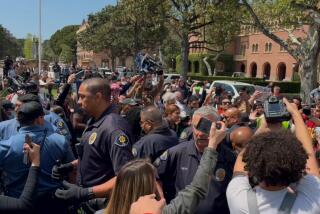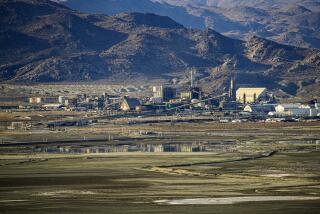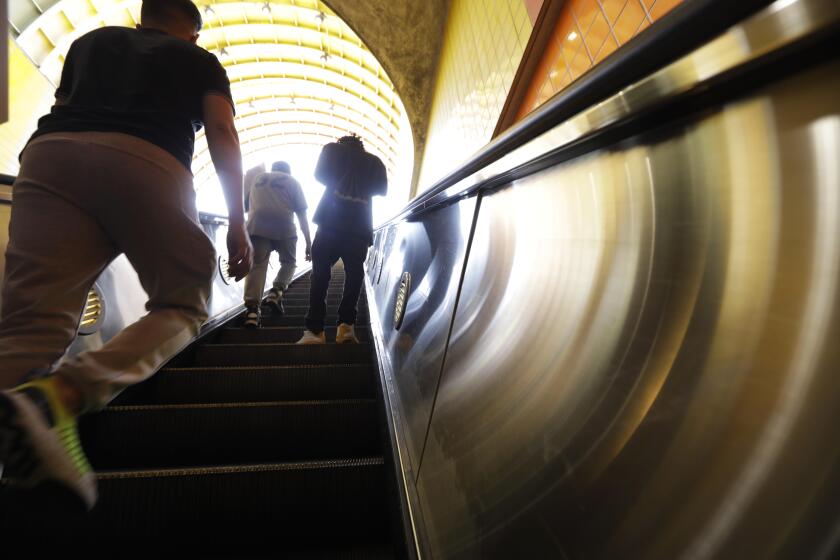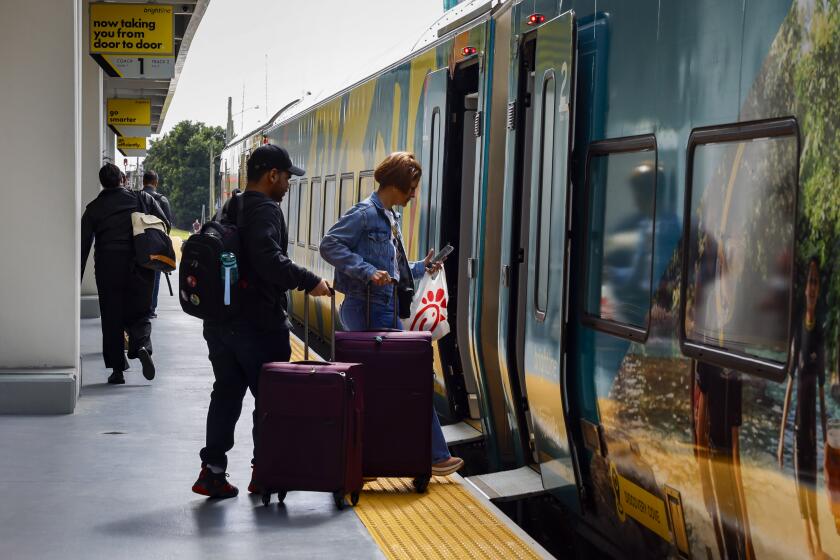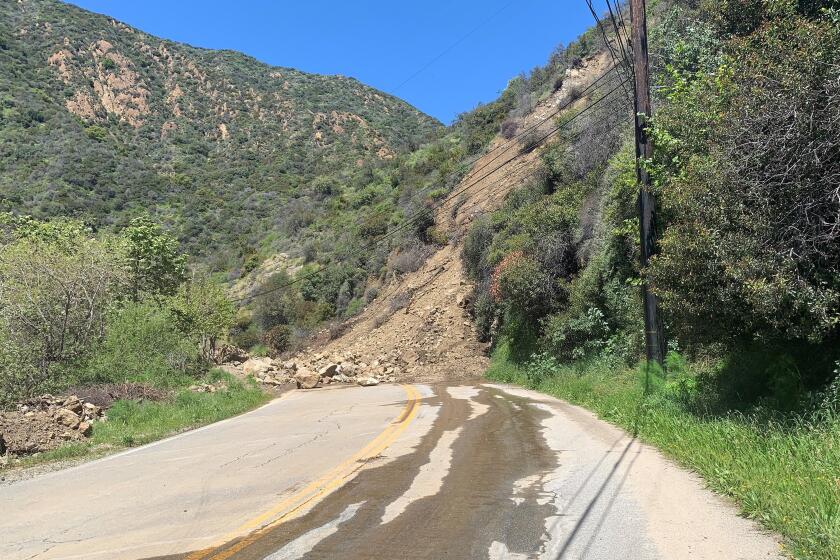Yosemite Busing Plan Stalls Amid Criticism
A potential cure for this celebrated park’s notorious summer traffic jams seemed at hand in 2000, when Interior Secretary Bruce Babbitt released a new master plan for mile-wide Yosemite Valley.
The plan’s centerpiece was a bold shift away from the automobile to public transit, and optimists thought that within a few years it would produce a quieter, cleaner, less congested Yosemite. But it appears they will be off by about a decade.
The planned system would slash day-use parking by two-thirds. Instead of driving, most day visitors would be ferried in from lots on the park’s perimeter by a fleet of clean-fuel buses.
Motorists no longer would pingpong around the valley in a frustrating search for parking. Rangers could stop joking about working for the “National Parking Service.”
But National Park Service officials now say a satellite bus system probably won’t be in place for another seven to 10 years. Boosters of the plan say the delay is unacceptable, certain to exacerbate traffic woes as California’s population skyrockets.
“We all recognized that it certainly wasn’t going to happen overnight, but this is putting it way out in the future,” said Jay Watson, the Wilderness Society’s regional director. “Frankly, the more time that goes by, the less momentum you have.”
There are still plenty of die-hard foes of the plan, people who believe that busing visitors to the valley is nothing short of un-American. Visitors faced with public transit will be scared off, they say, shut out from Yosemite’s granite walls, golden meadows and tumbling waterfalls -- one of nature’s most awesome spaces.
“It’s social engineering,” said Chuck Cushman, the burly, white-bearded leader of American Land Rights, a Battleground, Wash., property rights group that has joined the fight.
“The park service thinks Yosemite belongs to them. It’s a church and the rangers are the ministers, the monks and the friars. And they’re ratcheting down the ability of people to get inside.”
Cushman and his allies in Yosemite’s surrounding communities, which depend on a healthy flow of park tourists to fill the commercial till, haven’t been shy about making their point.
During a congressional hearing in Yosemite in April, dozens paraded around in prison stripes, some carrying placards reading “No Forced Busing” or “Stop the Yosemite Family Lockout.”
Over Memorial Day, they took up posts at park entrances, handing out brochures to the hordes queued up to come in. They were planning another such assembly of “greeters at the gates” for this weekend.
This all comes as the park’s attendance has dropped for six years running, slipping from 4.2 million in 1996 to less than 3.5 million last year.
Yosemite had experienced a stream of bad news: a horrific rock fall, a devastating flood and the murder of a park naturalist and three sightseers. Entry fees, meanwhile, jumped from $5 to $20.
Cushman sees another reason for the dip in visitors: the Yosemite Valley Plan.
After its approval three years ago, during the waning days of the Clinton administration, some tourists drew the wrong conclusion. They assumed that cars would be forbidden immediately and buses would be the only way into Yosemite Valley, a misconception that lingers.
The park and its visitors bureau still routinely get calls from around the world as ill-informed travel agents and tourists ask how to avoid a car blockade, unaware that none exists. Even a respected auto touring guide got it wrong a couple years back, erroneously advising visitors that the valley was closed to cars.
In fact, Yosemite has not turned away anyone since 1996, when a huge Memorial Day crowd prompted a gate closure and a subsequent storm of bad publicity.
With a fresh tempest blowing over the busing scheme, park officials insist their goal isn’t an attempt to preserve nature by throwing up barriers. They simply want to be prepared for the swelling stream of visitors expected in the coming years. And they hope to reduce the automobile’s more unpleasant effects on the valley: noise, exhaust, congestion.
“The park experience should not be a parking lot experience,” said Mike Reynolds, Yosemite’s planning manager.
The notion of busing tourists into the valley -- a place already crowded with hundreds of buildings, hotel rooms, campsites and roadways -- first arose in 1980, embedded in a master plan that declared traffic “the single greatest threat” to enjoyment of Yosemite Valley.
But the idea languished for years, even as the way people experienced the park made a sociological shift. A generation ago, most folks arrived to spend the night camping. Now, 80% of tourists spend just the day at the park, lodging in the fleet of motels in peripheral communities.
The busing push got a second wind after the New Year’s flood of 1997 wiped out campsites and ripped up roads. A consolidated master plan to guide Yosemite into the new century took shape, with the transit proposal a key ingredient of the campaign to ease the human footprint on the valley.
“We feel it’s reflective of the way the American people want to visit Yosemite,” said Scott Gediman, Yosemite’s chief spokesman. “People are concerned about traffic congestion, overcrowding and preserving a good visitor experience. They want to come and enjoy Yosemite in a natural state.”
Little progress was made on the plan’s menu of refurbishment projects, traffic fixes and ecological rehabilitation in the early years, as carping continued over the bus idea and other points of contention.
With Congress growing testy over the slow pace, Yosemite officials and National Park Service Director Fran Mainella sat down in January 2002 with Rep. George Radanovich, a Mariposa Republican and critic of the busing proposal.
Radanovich, who now heads the influential House subcommittee on parks, said the shift away from the automobile would create a sort of “Checkpoint Charlie,” souring Yosemite visitors.
He has threatened to block federal funding for the buses and peripheral parking lots if Yosemite officials press forward with the plan, which would remove all but 550 of the valley’s 1,600 day-use parking slots. Additional parking would remain for overnight guests at lodges and campgrounds.
All sides agreed at the meeting to put off the hard decisions and go forward with 15 key construction projects deemed noncontroversial, such as construction work underway this summer to refurbish the trailhead to Yosemite Falls.
The park also is going ahead with planning for a spate of improvements to rev up Yosemite’s antiquated road network, such as rerouting traffic around a bottleneck near Yosemite Lodge.
Some environmentalists are asking whether putting the bus plan on the back burner is really an attempt by the Bush administration to silently kill off the satellite parking plan.
Watson, of the Wilderness Society, grumbles that there appears to be little planning underway for the transportation changes. “That makes me nervous,” he said.
Park officials insist they are committed, and retain the blessing of the Bush administration. They believe the satellite transit service can help Yosemite, pointing to the success of a new system at Zion National Park in southern Utah. There, propane-powered buses ply the 16-mile round trip into Zion’s scenic box canyon. Last year, 2.3 million people rode the system, more than 85% of the park’s visitors.
“It’s pretty well been accepted,” said Eddie Lopez, Zion’s assistant superintendent.
Foes of busing at Yosemite say the National Park Service shouldn’t try to make one size fit all, and some say the traffic woes are overblown, amounting to serious congestion only a few days each summer.
“They’re stealing the national parks from the American people,” said Peggy Mosley, owner of the historic Groveland Hotel, an hour outside the park. “They want people to come in on a bus, then turn around and leave -- with the exception of the few that will be staying at their pricey hotels.”
Separating visitors from their cars, the opponents say, makes them ever more dependent on food and other concession services offered at the park, producing an experience that is more costly, controlled and commercialized. Mosley speaks of the difficulties a family of four might experience trying to navigate Yosemite by bus while loaded with stuff that would fit comfortably into a car, such as a picnic basket and ice chest, a baby stroller and barbecue briquettes. “It just doesn’t work,” she said. “They won’t come back.”
Rep. Radanovich is confident that the valley’s worst bottlenecks and parking headaches can be fixed without the planned transit system -- which would cost an estimated $7.4 million annually. “A few minor improvements are going to all but solve the traffic problem,” he said.
Park officials say the state’s population explosion makes the satellite bus plan inevitable. They believe it can be made so inviting -- offering a comfortable, scenic tour as visitors are ferried in -- that everyone will want to use it.
More to Read
Start your day right
Sign up for Essential California for news, features and recommendations from the L.A. Times and beyond in your inbox six days a week.
You may occasionally receive promotional content from the Los Angeles Times.
